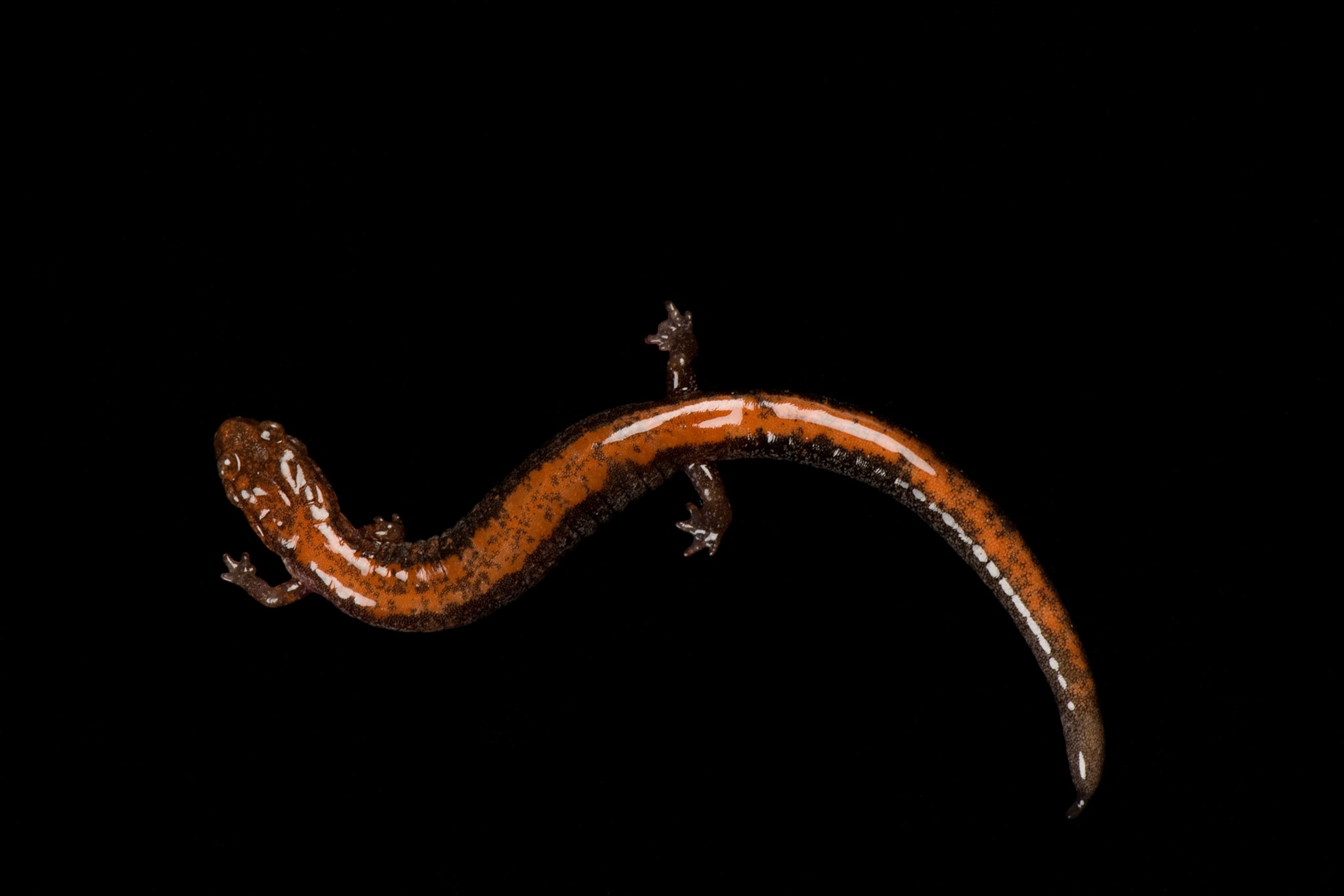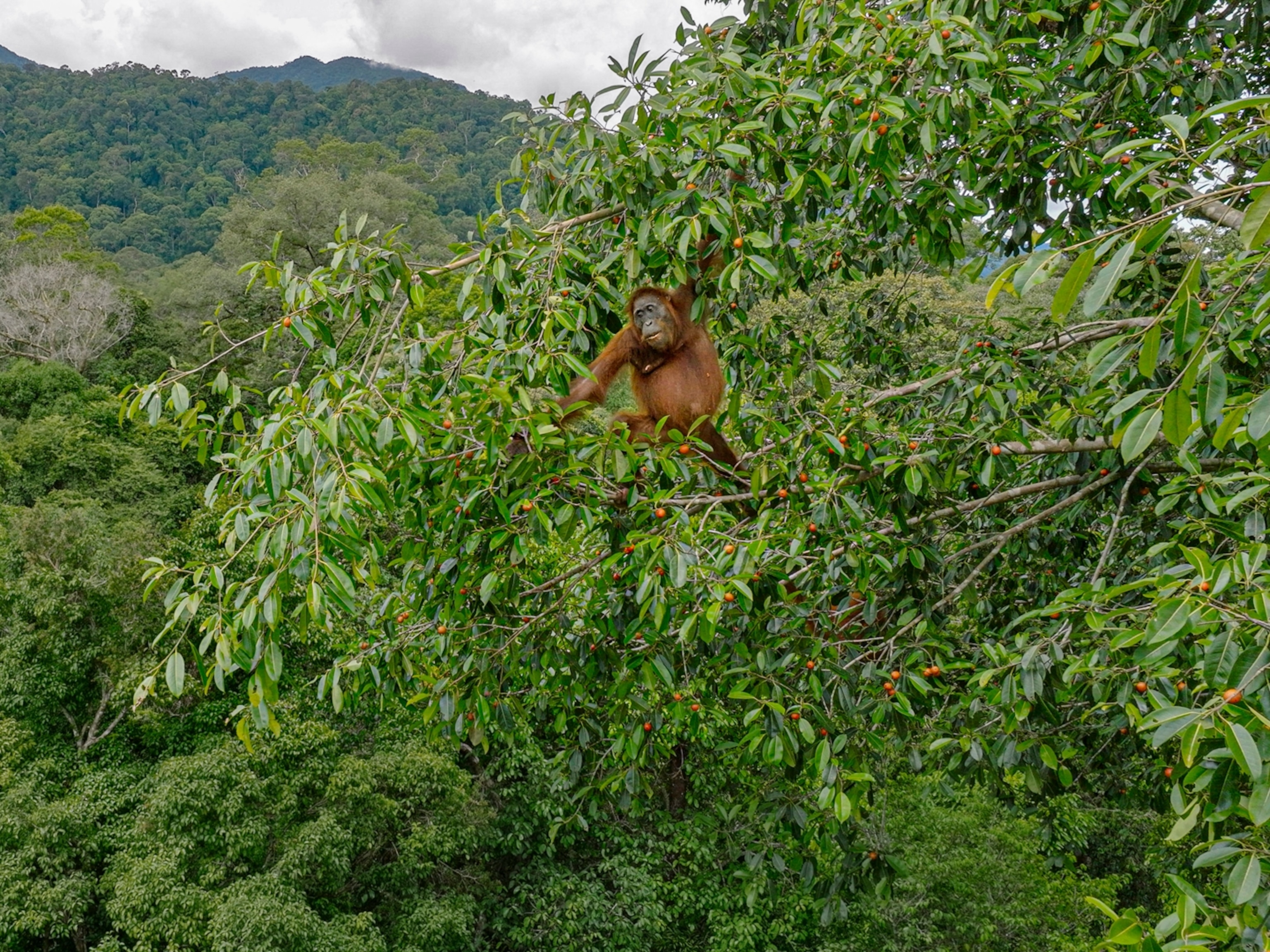
New Pinocchio frog species has a strange, pointy nose
“You could say it found us, rather than we found it,” scientist says of the curious-looking Indonesian tree frog.
In the mountainous forests of New Guinea, scientists have described a new kind of tree frog whose males sport a single, fleshy spike on their nose.
Ladies and gentlemen, meet the northern Pinocchio frog.
Paul Oliver, a herpetologist at the Queensland Museum and Griffith University in Australia, actually discovered these curious-looking amphibians on a field expedition back in 2008, while he and his crew were hiding from the rain in Indonesia’s Foja Mountains.
He happened to look over and spot the mottled green, brown, and yellow frog sitting atop a bag of rice. (Read more about the Foja Mountains' incredibly diverse rainforests.)
“You could say it found us, rather than we found it,” says Oliver, who officially described the new species, Litoria pinocchio, in the latest issue of Zootaxa.
The Pinocchio frog is just one of a handful of New Guinea treefrogs in the same genus that sport these spiky noses, or rostrums. Oliver and his team described two other new species in another recent paper, also in Zootaxa.
Now, Oliver and his colleagues are hard at work trying to figure out what that adorable little schnozzes are for.
“What is particularly striking is that it is erectile,” Oliver says in an email. “At times it sticks out quite straight, while at other times it droops downward. So, they are pretty elaborate structures that must have some purpose.” (Read about an “extinct” Pinocchio lizard rediscovered in Ecuador.)
Nosing around
One theory is that the nose attracts females—but that is problematic, he says.
See amazing amphibian pictures























“When other biologists have looked at breeding choruses of spike-nose frogs, they have found that there is no pattern in the lengths of spikes on the males the females mate with,” he says. (See five animals with weird noses.)
Oliver also suspects the spikes could help the frogs identify one species from another in the species-rich forests. With more than 450 species of frogs already described, and many more out there yet to be discovered, New Guinea—the world’s second-largest island—has more frog species than any other island in the world.
“I tend to favor the second theory,” says Oliver. “But the truth is, like so much in biology, we don’t really know.”
“Island of opportunity”
Though we don’t tend to think of the southern Pacific island—divided between Indonesia and Papua New Guinea—as a frog paradise, New Guinea has a similar number of frogs per area as the Amazon rainforest, notes Debbie Bower, a conservation biologist at the University of New England in Australia.
“Continued discoveries of unique species that have remained unknown to science demonstrate how little we know about biodiversity in remote places like New Guinea,” says Bower.
“The Pinocchio frog is one such example and highlights how important it is to enact conservation strategies that prevent and prepare for key threats like the amphibian chytrid fungus.” (See 13 gorgeous pictures that remind us why frogs need our help.)
In fact, Bower describes New Guinea—which is so far free of chytrid—as an “island of opportunity,” because it could become a safe haven for the world’s amphibians. She published a recent paper in the journal Frontiers in Ecology and the Environment calling on New Guinea to plan now for the fungus’ arrival and slow its spread if it arrives.
“If we do not focus research and conservation in refuges like New Guinea,” she says, “we risk losing species that we did not know existed.”
You May Also Like
Go Further
Animals
- Octopuses have a lot of secrets. Can you guess 8 of them?
- Animals
- Feature
Octopuses have a lot of secrets. Can you guess 8 of them? - This biologist and her rescue dog help protect bears in the AndesThis biologist and her rescue dog help protect bears in the Andes
- An octopus invited this writer into her tank—and her secret worldAn octopus invited this writer into her tank—and her secret world
- Peace-loving bonobos are more aggressive than we thoughtPeace-loving bonobos are more aggressive than we thought
Environment
- This ancient society tried to stop El Niño—with child sacrificeThis ancient society tried to stop El Niño—with child sacrifice
- U.S. plans to clean its drinking water. What does that mean?U.S. plans to clean its drinking water. What does that mean?
- Food systems: supporting the triangle of food security, Video Story
- Paid Content
Food systems: supporting the triangle of food security - Will we ever solve the mystery of the Mima mounds?Will we ever solve the mystery of the Mima mounds?
- Are synthetic diamonds really better for the planet?Are synthetic diamonds really better for the planet?
- This year's cherry blossom peak bloom was a warning signThis year's cherry blossom peak bloom was a warning sign
History & Culture
- Strange clues in a Maya temple reveal a fiery political dramaStrange clues in a Maya temple reveal a fiery political drama
- How technology is revealing secrets in these ancient scrollsHow technology is revealing secrets in these ancient scrolls
- Pilgrimages aren’t just spiritual anymore. They’re a workout.Pilgrimages aren’t just spiritual anymore. They’re a workout.
- This ancient society tried to stop El Niño—with child sacrificeThis ancient society tried to stop El Niño—with child sacrifice
- This ancient cure was just revived in a lab. Does it work?This ancient cure was just revived in a lab. Does it work?
- See how ancient Indigenous artists left their markSee how ancient Indigenous artists left their mark
Science
- Jupiter’s volcanic moon Io has been erupting for billions of yearsJupiter’s volcanic moon Io has been erupting for billions of years
- This 80-foot-long sea monster was the killer whale of its timeThis 80-foot-long sea monster was the killer whale of its time
- Every 80 years, this star appears in the sky—and it’s almost timeEvery 80 years, this star appears in the sky—and it’s almost time
- How do you create your own ‘Blue Zone’? Here are 6 tipsHow do you create your own ‘Blue Zone’? Here are 6 tips
- Why outdoor adventure is important for women as they ageWhy outdoor adventure is important for women as they age
Travel
- This royal city lies in the shadow of Kuala LumpurThis royal city lies in the shadow of Kuala Lumpur
- This author tells the story of crypto-trading Mongolian nomadsThis author tells the story of crypto-trading Mongolian nomads
- Slow-roasted meats and fluffy dumplings in the Czech capitalSlow-roasted meats and fluffy dumplings in the Czech capital




